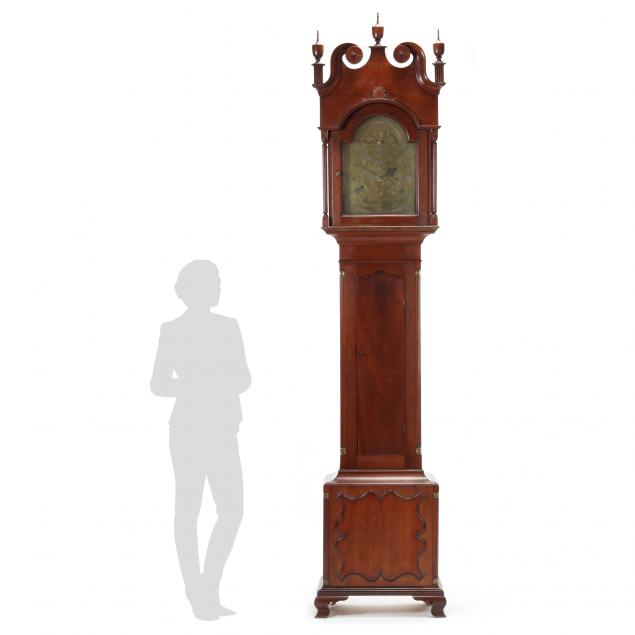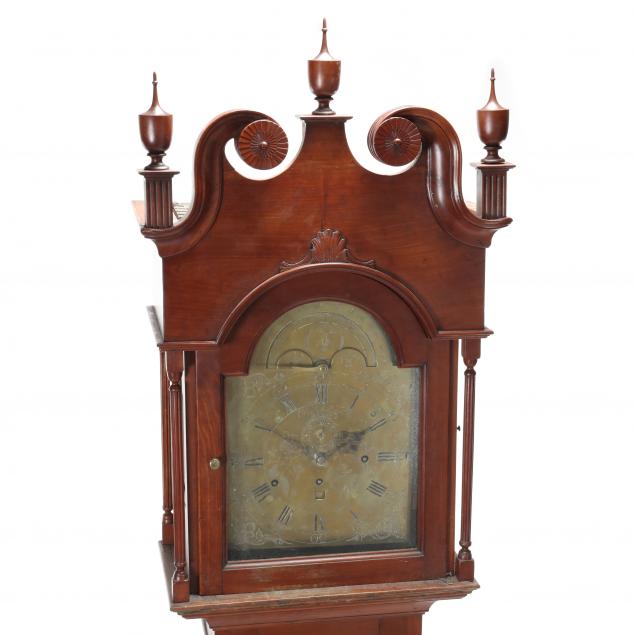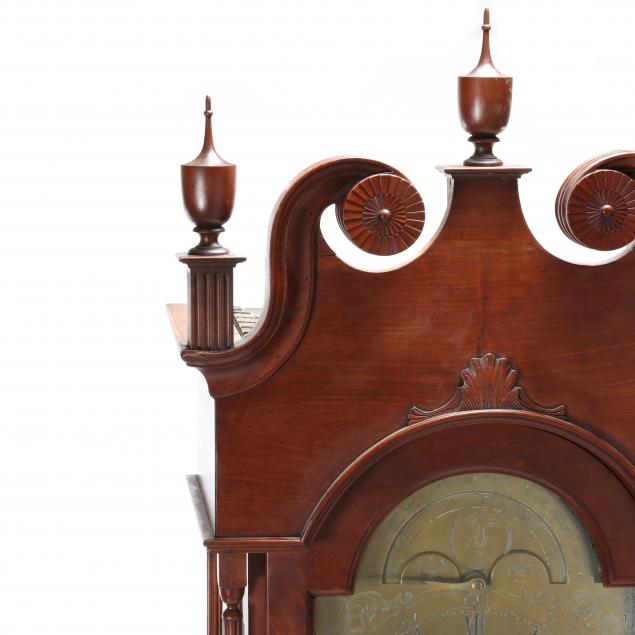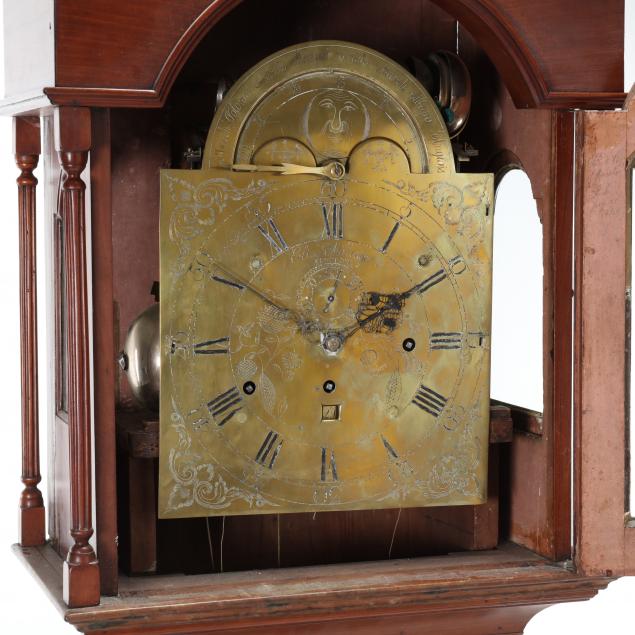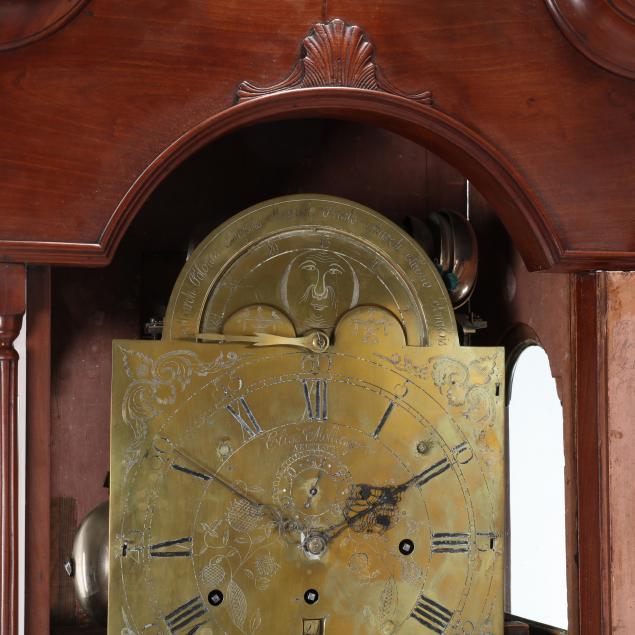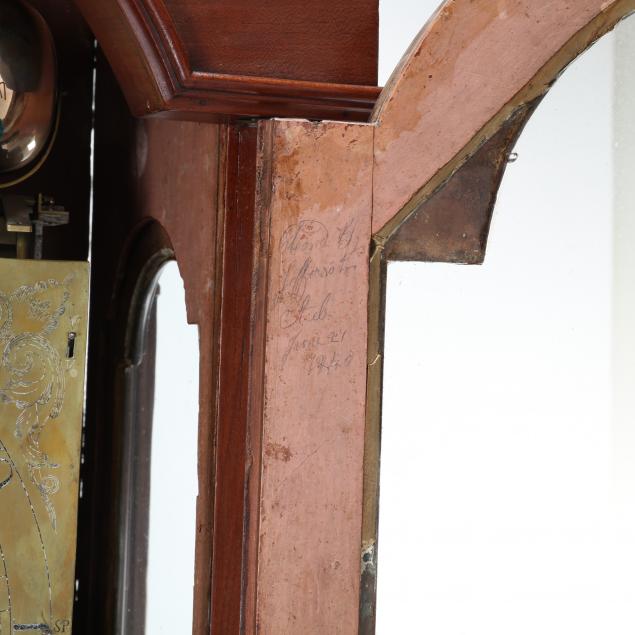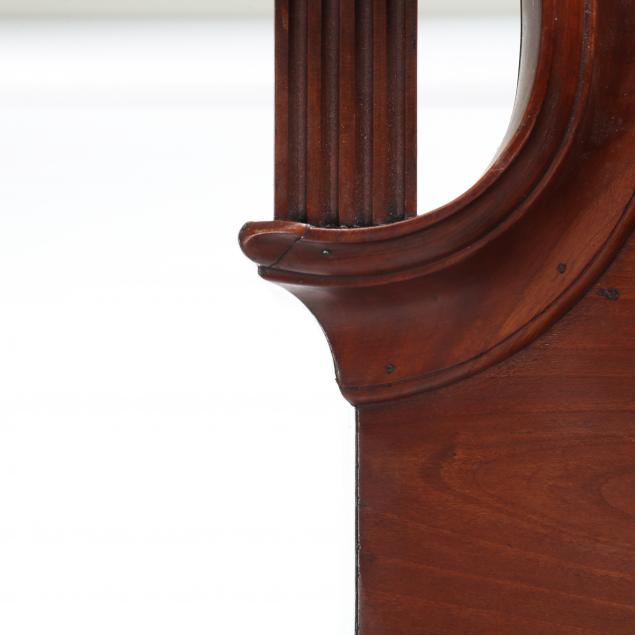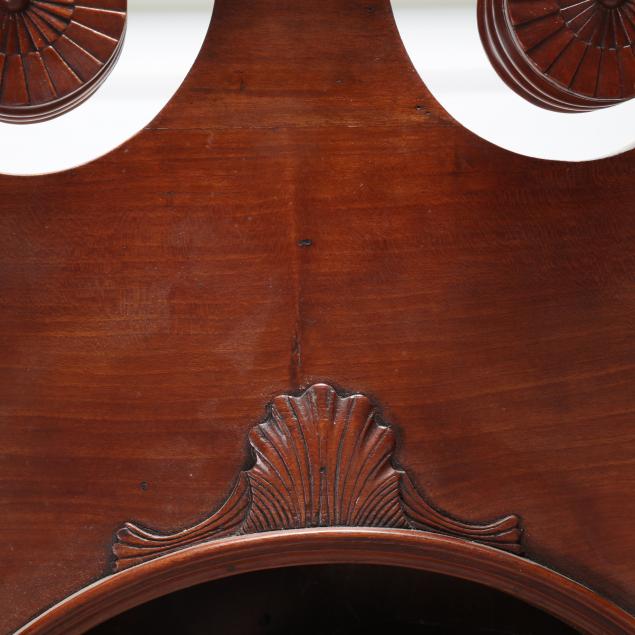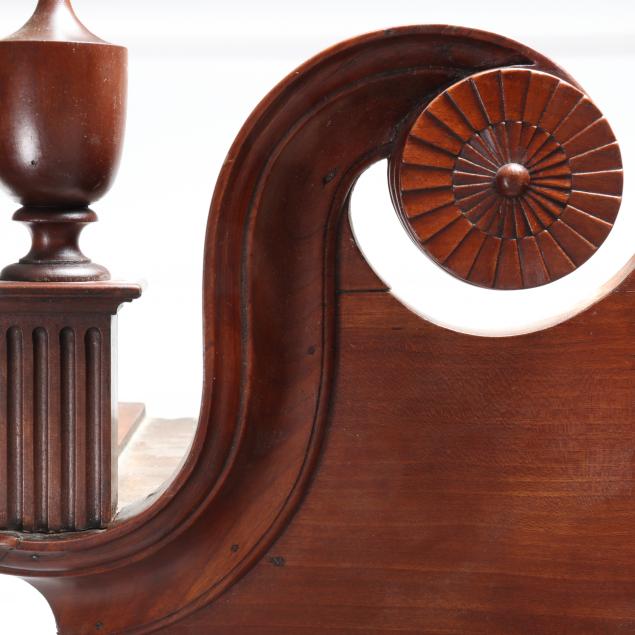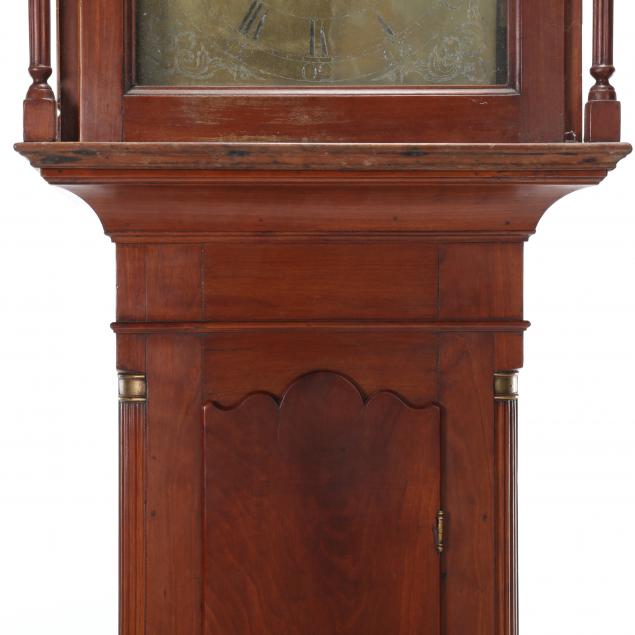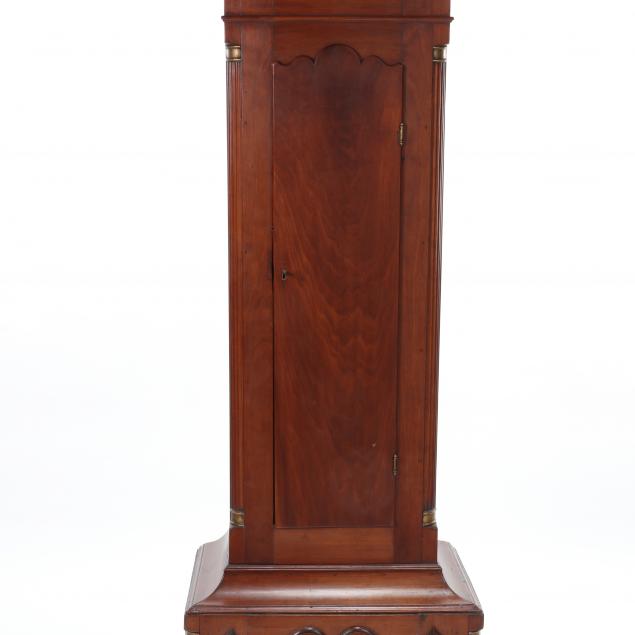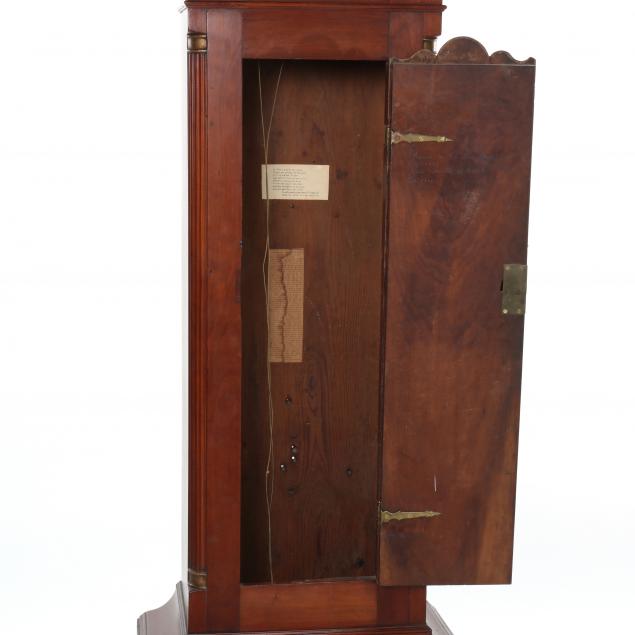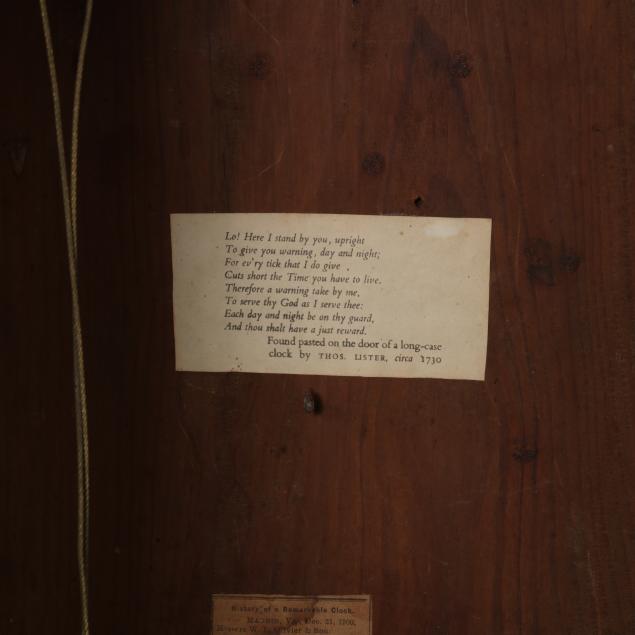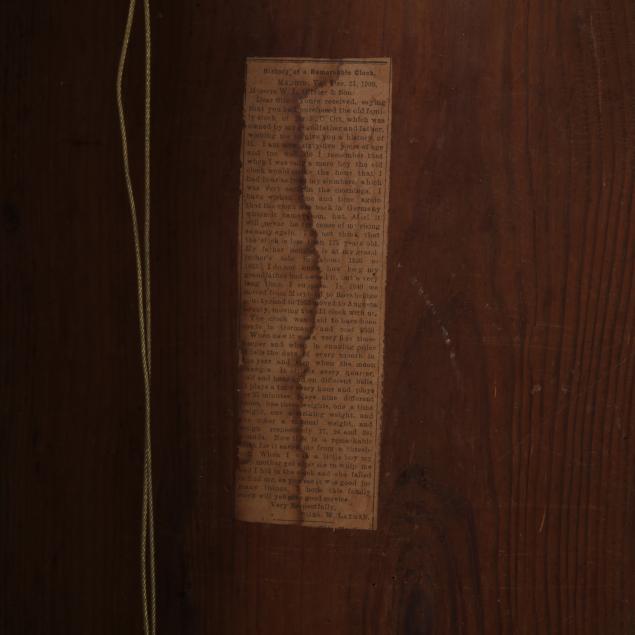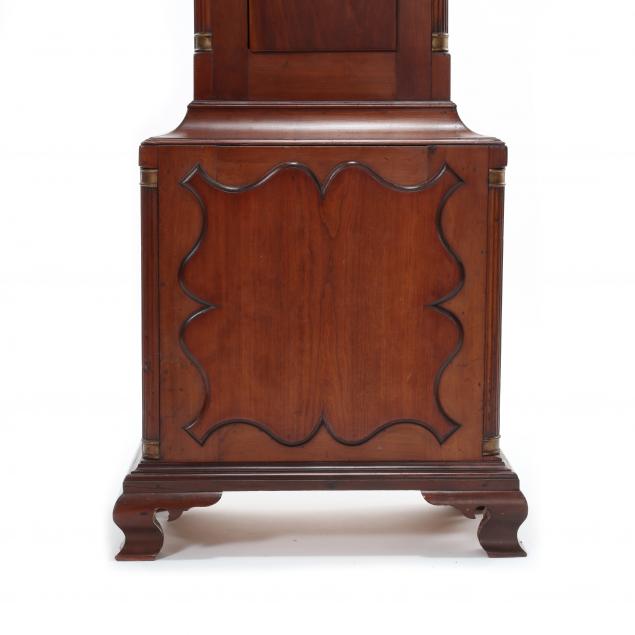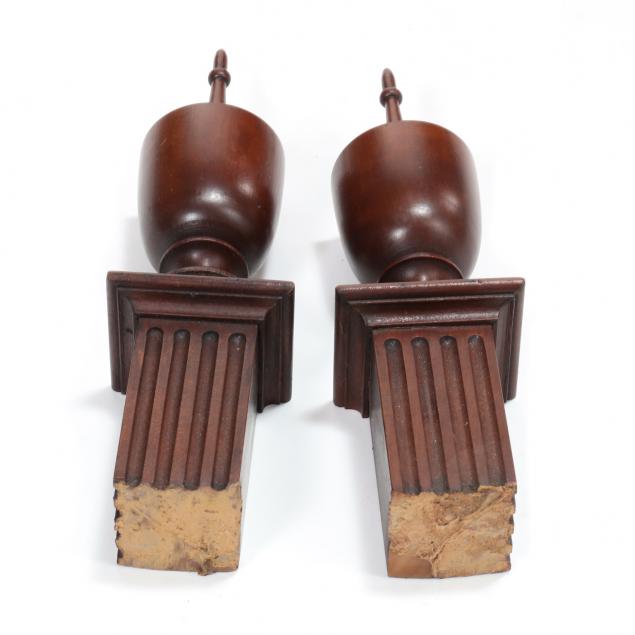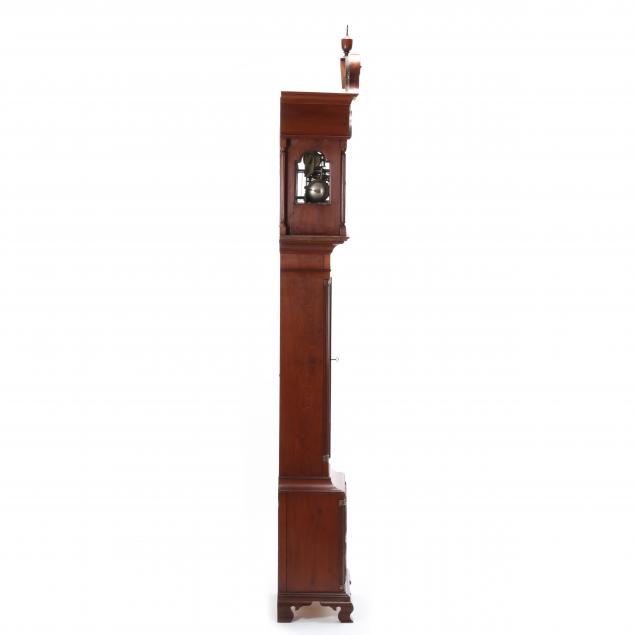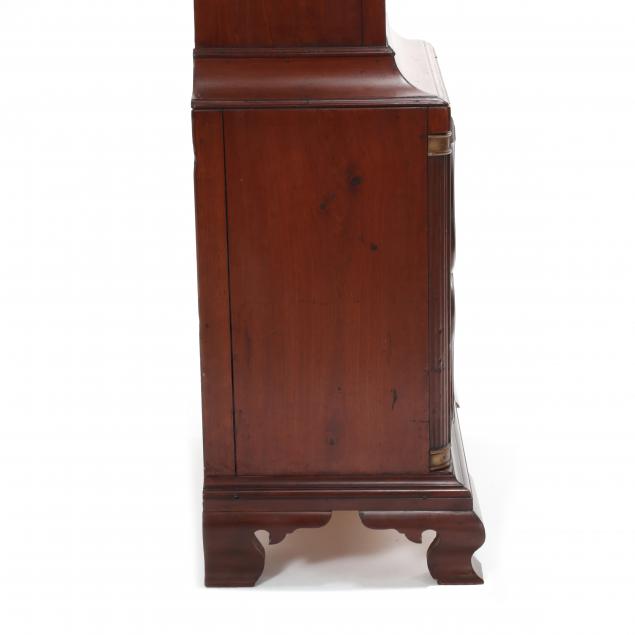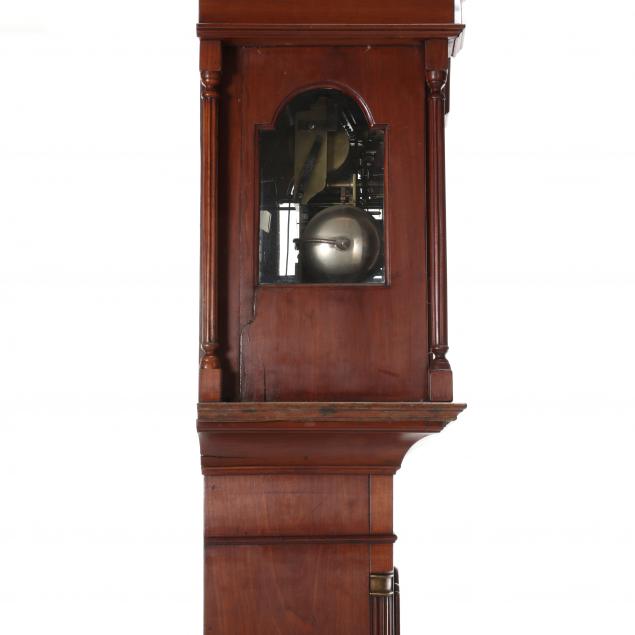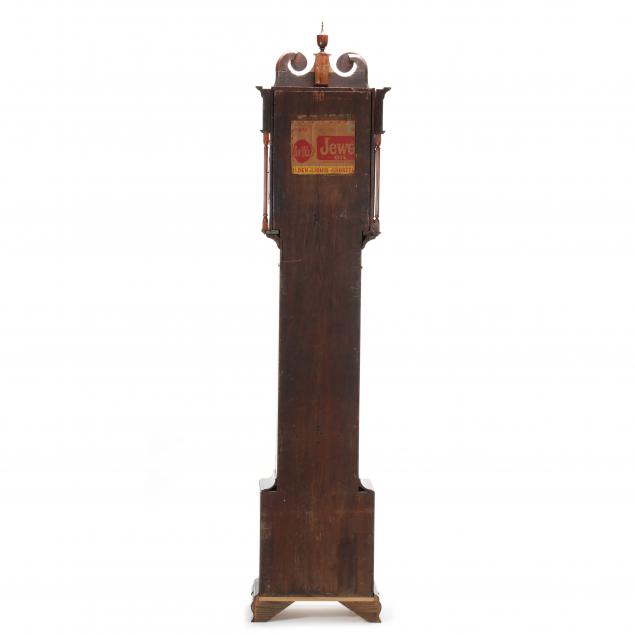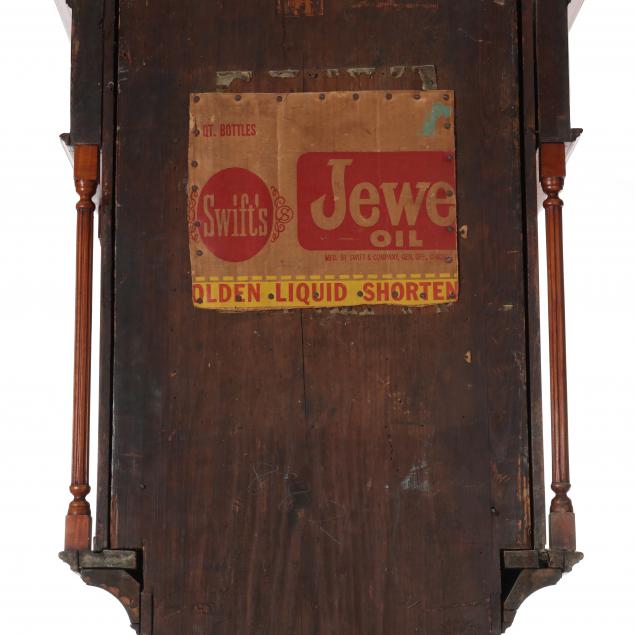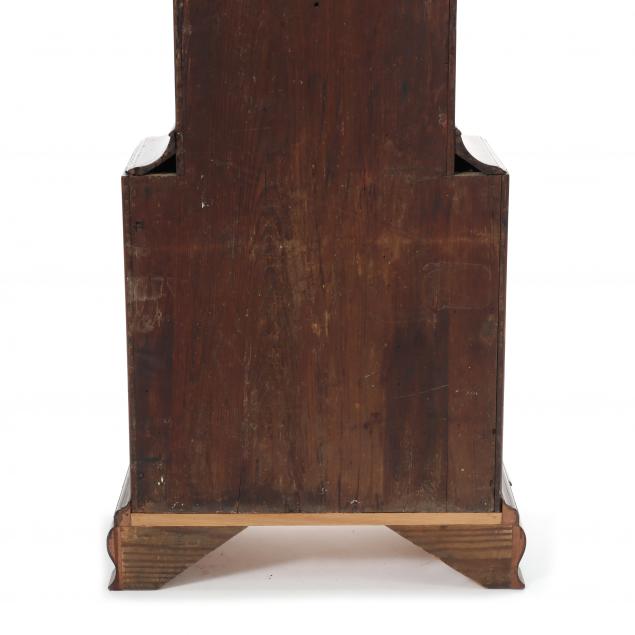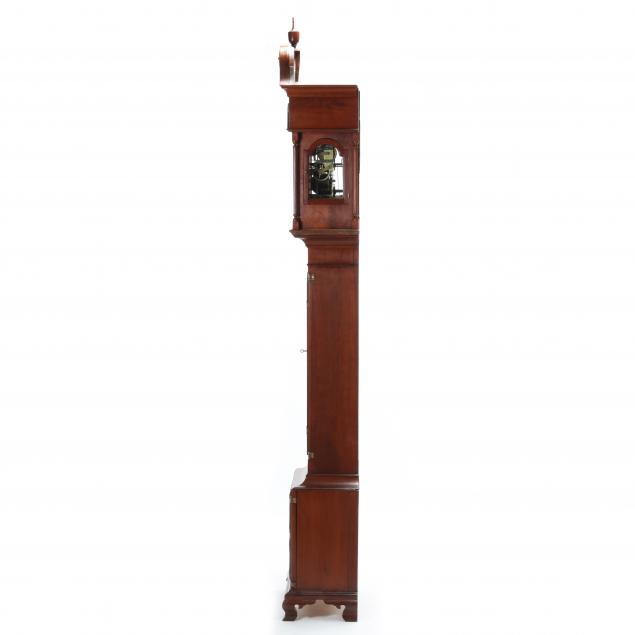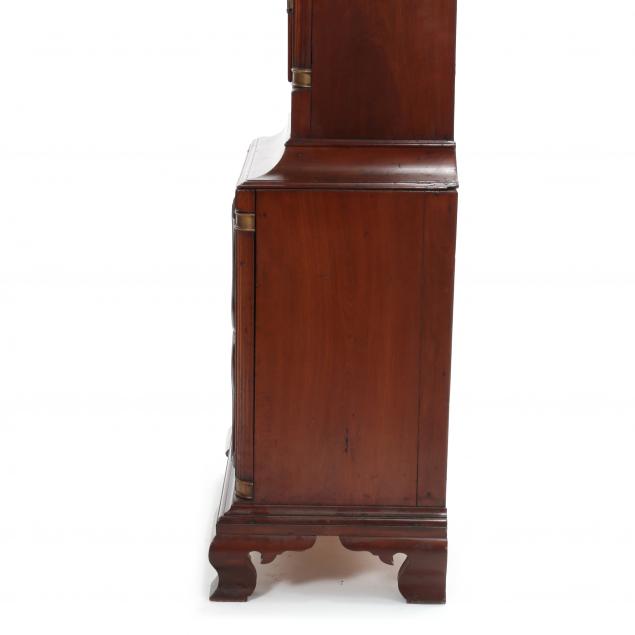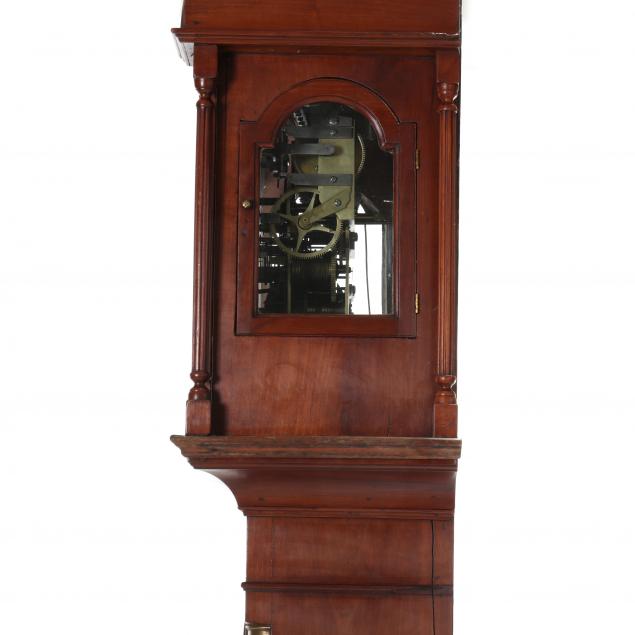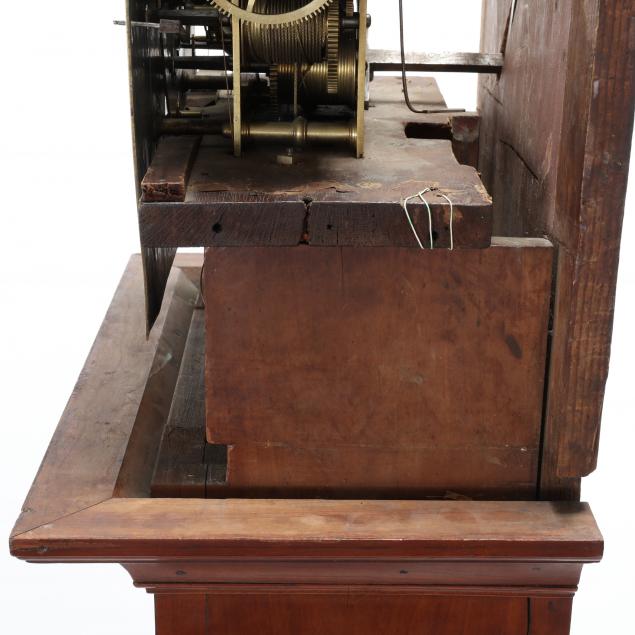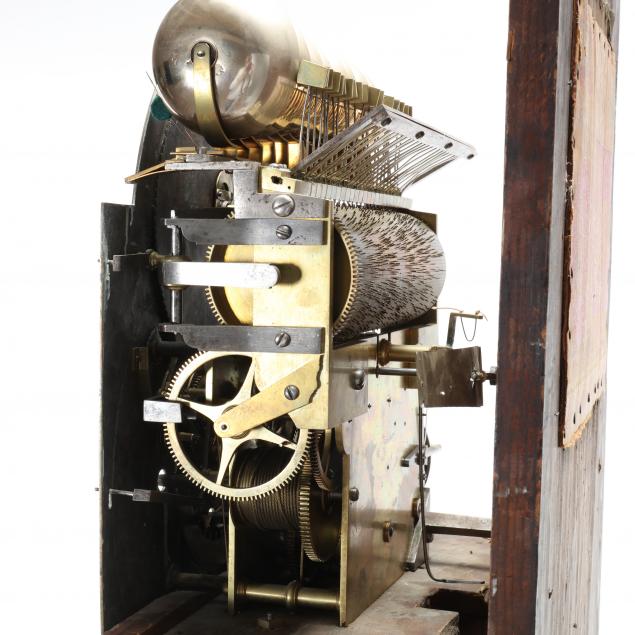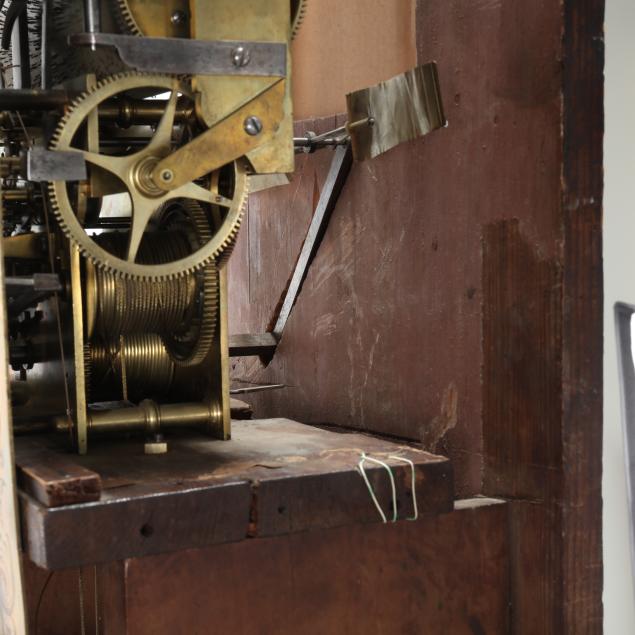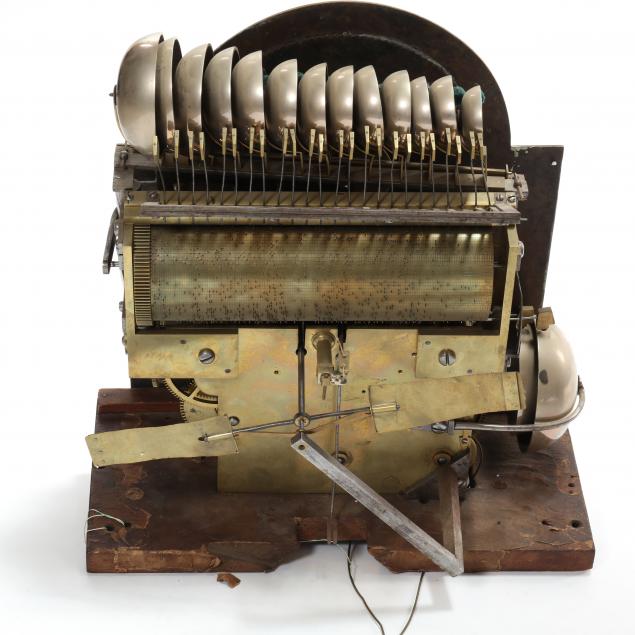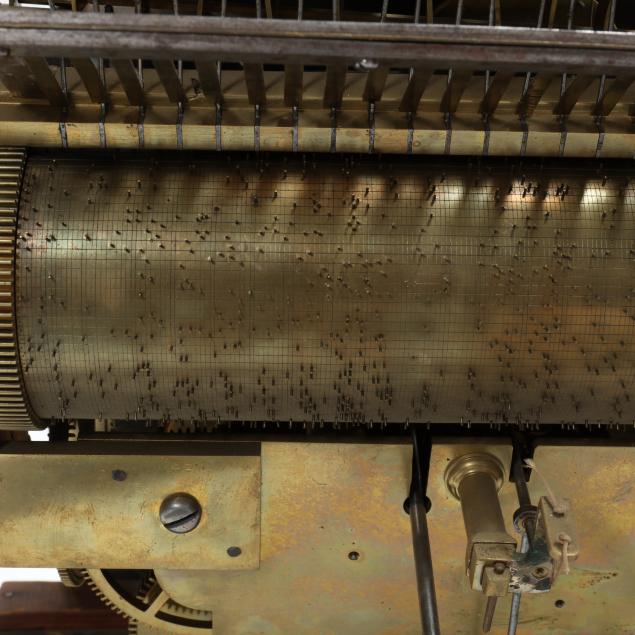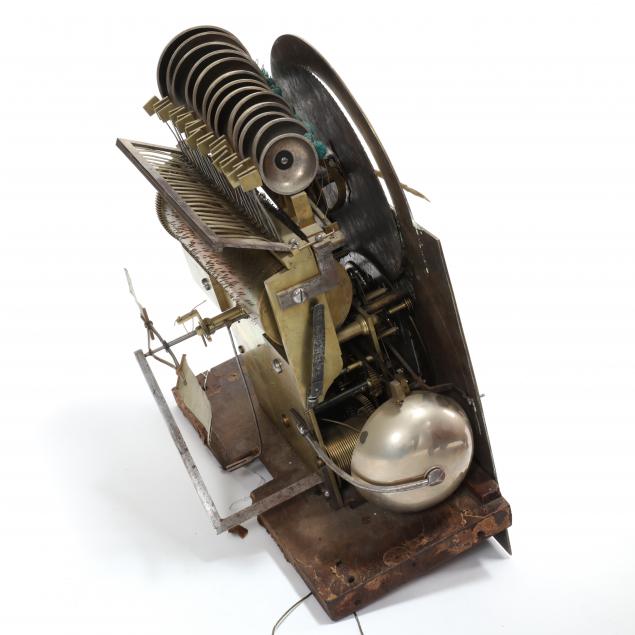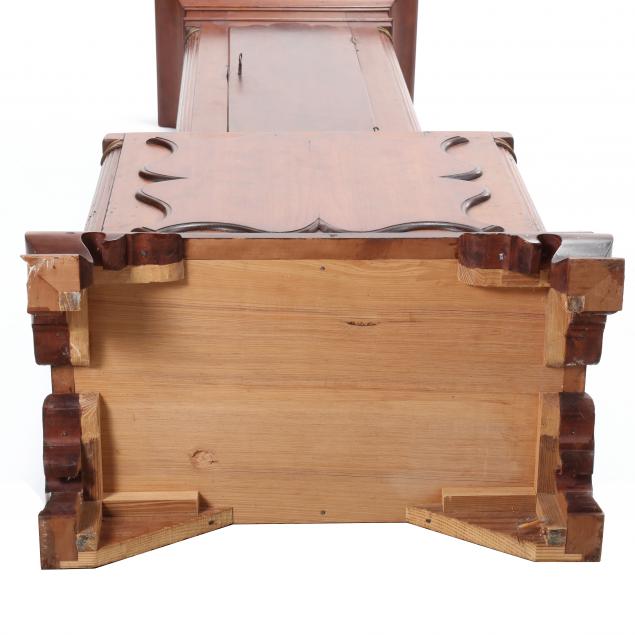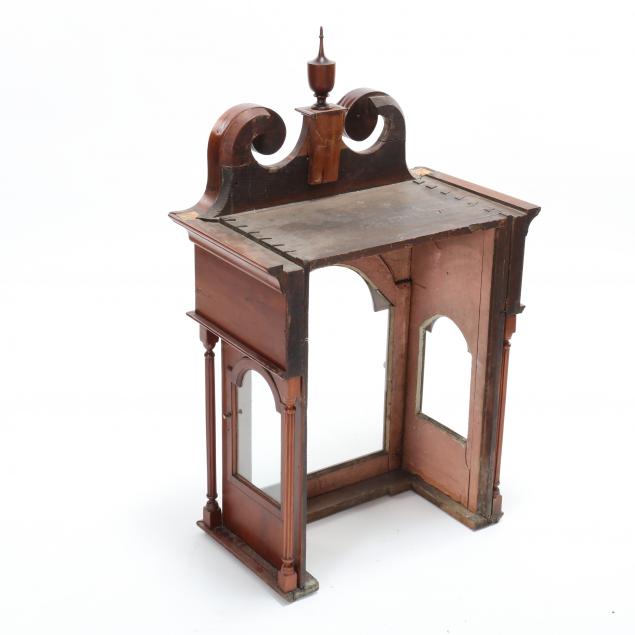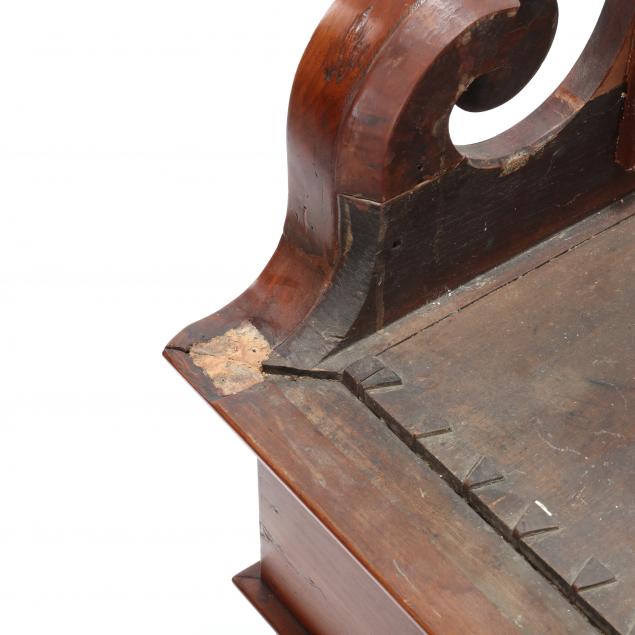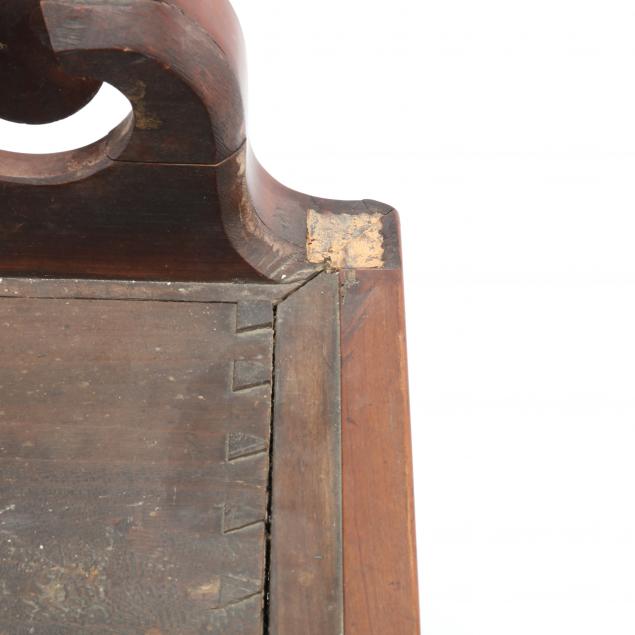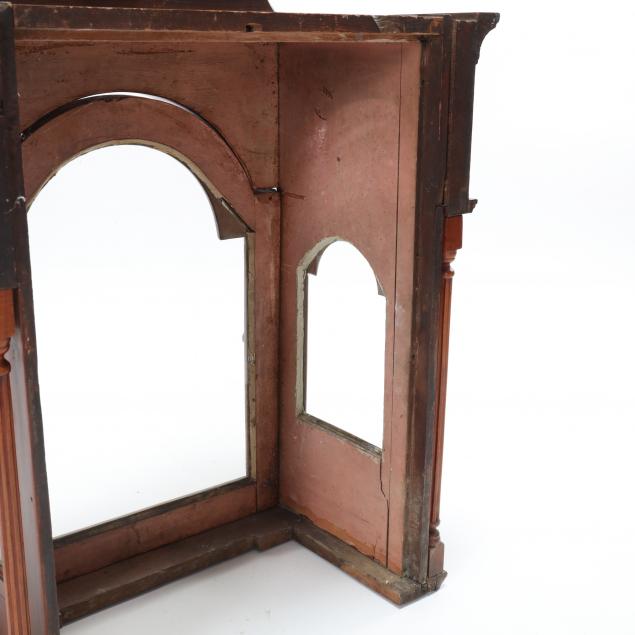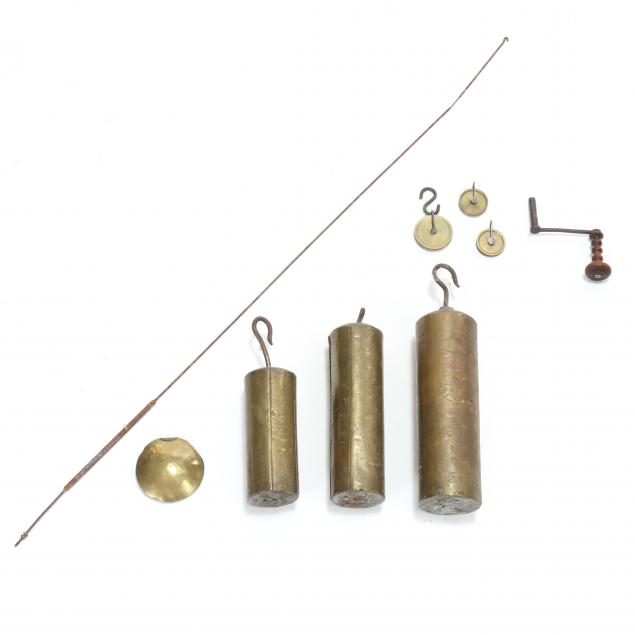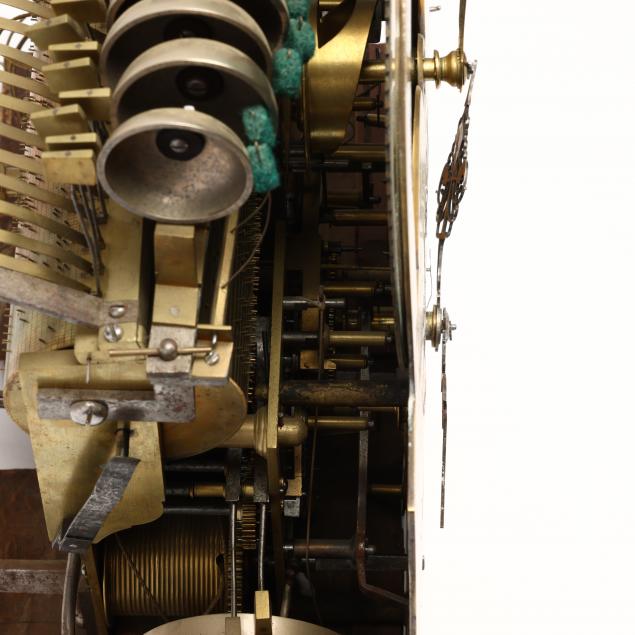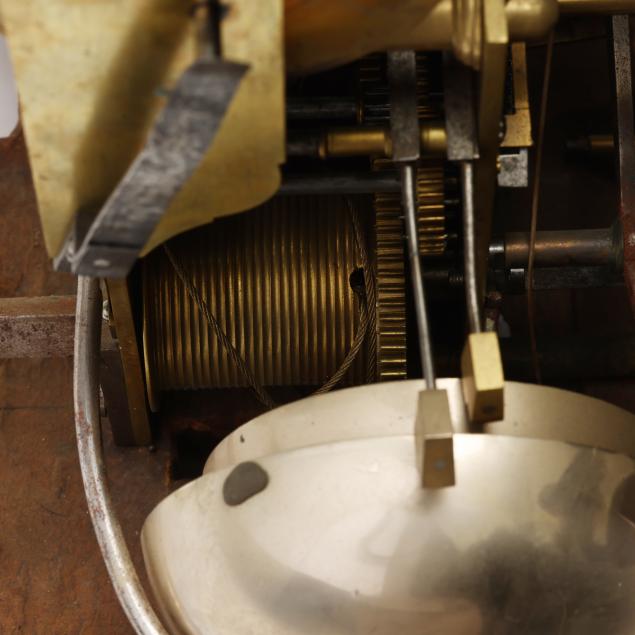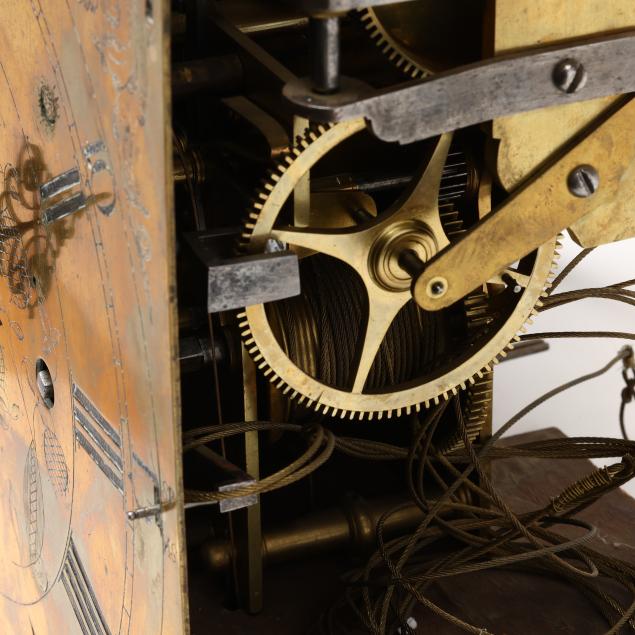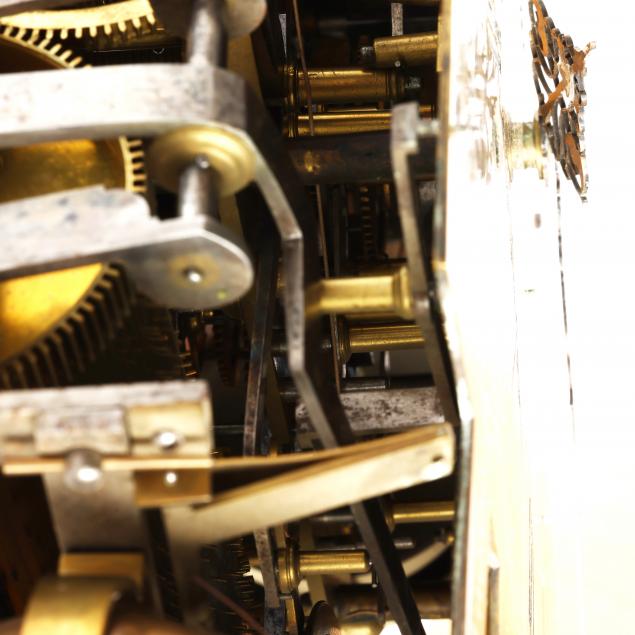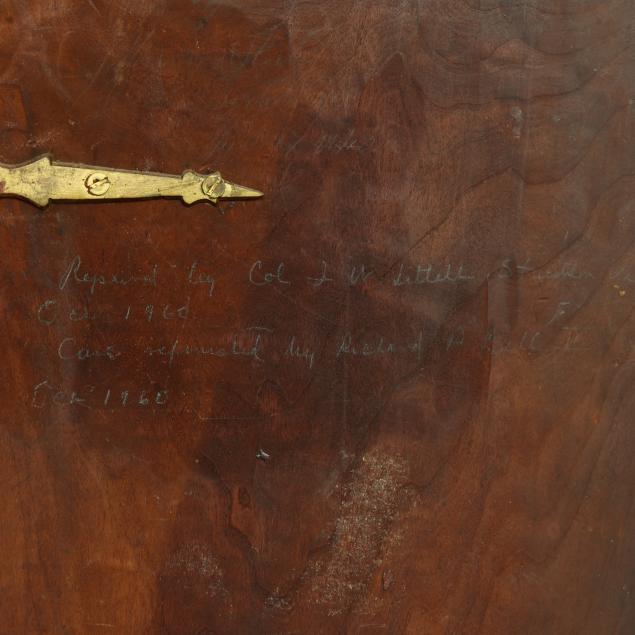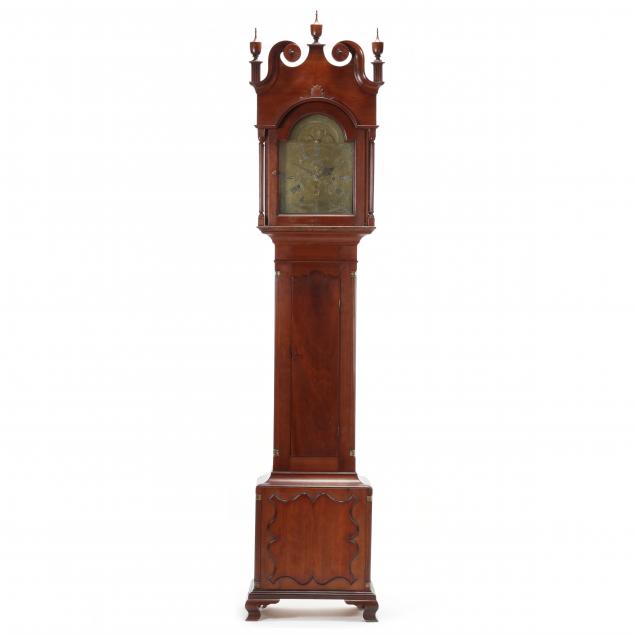
Lot 4103
Rare Pennsylvania Chippendale Cherry Tall Case Clock, Musical Works by Elias Mollinger
Explore more items like this one.
Visit our Decorative Arts Department Decorative Arts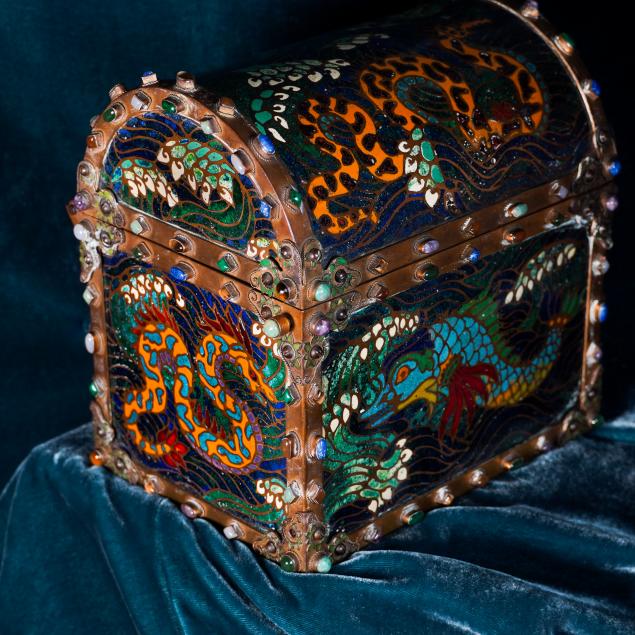
Lot Details & Additional Photographs
The cherry case eastern Pennsylvania region, yellow pine secondary, late 18th century, the dovetailed hood with broken arched pediment, three turned urn finials, and carved rosettes at terminus, the open frieze with applied carved shell, hinged tombstone door flanked by four turned fluted columns, each side with a tombstone with glazed aperture, the right side hinged for access to works, the case with hinged waist door with scalloped crest flanked by fluted quarter columns with brass capitals, upper and lower cove molding, the base with applied scalloped panel, flanked by repeating fluted quarter columns with brass capitals, molded base, raised on ogee bracket feet, together with winding key, case key, pendulum, three brass weights.
109.5 x 24 x 13.5 in.; height to top of pediment 104 in.; case width 15 in.
Private Collection, Richmond, Virginia.
The Mollinger (Möllinger/Moellinger) family of clockmakers was located in Neustadt, Mannheim, Frankenthal, and Berlin, Germany. The patriarch of the family, Johann Jacob Mollinger (1695-1763), was a famous Mennonite clockmaker, primarily located in Rhineland-Palatinate, Germany. Jacob's would become one of Germany's most important clock workshops of the period, producing the "Altportl-Uhr" in Speyer, and the clock in the Dreifaltigkeitskirche Cathedral in Worms.
As Mennonite and German immigrants began to settle in Pennsylvania, many of Pennsylvania's 18th-century tall case clocks either contained Mollinger movements that were imported from Germany, or the clock-making firms in America were making works that were modeled after their design from about 1720 on.
In J. Carter Harris' text, Pennsylvania Clocks: 1750-1850, Harris explains the Lancaster Master clocksmith, George Hoff (1733-1816), "learned the trade of clockmaking from his father-in-law, George Schnertzel, in Grunstadt, the Palatinate. Thus, when he and his family arrived in Philadelphia in 1765, he was a fully trained clockmaker in the German tradition. Hoff's early clocks strongly resemble
those of Neustadt clockmaker Jacob Moellinger, many of which were brought to America by German immigrants." The musical works in this Lot strongly resemble one made by Martin Shreiner (1769-1866) of Lancaster County, on page 27 of Harris' text.
Genealogical research indicates Johann Jacob married twice, and had several children, most of which went into the family clock-making trade. His first wife, Margaretha Wurz, bore him four sons, Friederich, Joseph, Jacob, and Johannes. Margaretha passed in 1741, and Johann's second spouse, Elisabetha Sentzenich (1714–1790), birthed two sons, Martin and Daniel, before having daughter Judith in 1748, and lastly, twin brothers Christian and Elias on September 26, 1754.
Elias (1754-1799) not only operated his own clocksmith shop, but would also officially inherit his father's business after Elisabeth Möllinger passed in 1790, although the workshop had been under his supervision for ten years prior.
Elias' oldest stepbrother, Friedrich Moellinger (1725-1767), was a famous clockmaker working in Mannheim, Germany, receiving distinguished royal honors in 1749 as Court Clockmaker to Carl Theodor, ruler of Bavaria and the Prince Elector of the Palatinate. Elias' twin brother, Christian (1754-1826), manufactured astronomical, musical, and organ-playing clocks in Berlin, where he served as a Court Clockmaker to the Prussian kings Frederick the Great and Frederick William II.
Literature: Harris, J. Carter. Pennsylvania Clocks 1750-1850: A Special Exhibit of the National Watch and Clock Museum. A look at makers from 12 different counties in Pennsylvania. Copyright 2002 NAWCC, Inc.
Neff, Christian. "Möllinger, Jakob (1695-1763)." Global Anabaptist Mennonite Encyclopedia Online. 1957.
Pencil repair inscription to interior of waist door from 1960s.
Later ogee bracket feet; later finials; hood central plinth upper three inches later; broken arched pediment original but applied rosettes are later; cut/patch to left stile by waist door escutcheon; slight misshaping to clock hands; pulleys likely later. Please see Terms and Conditions of Sale: Clocks and Watches.
